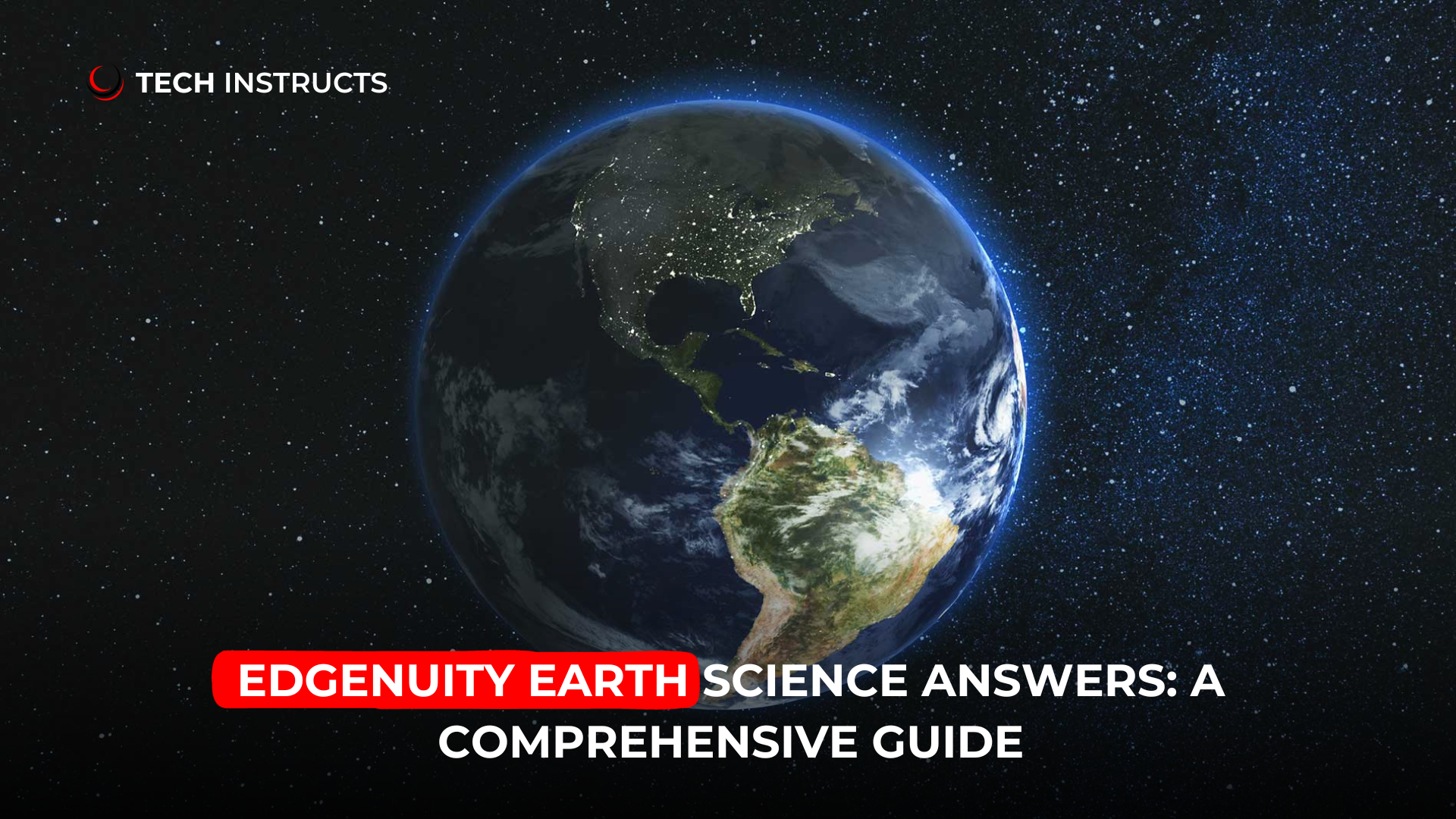Edgenuity Earth and Space Science is a comprehensive online course that covers a wide range of topics, including:
- The structure of the Earth
- The Earth’s atmosphere
- The Earth’s hydrosphere
- The Earth’s biosphere
- The Earth’s climate
- The Earth’s history
- The solar system
- The universe
The course is designed to be challenging, but it is also very rewarding. Students who successfully complete the course will have a strong understanding of the Earth and its place in the universe.
If you are taking Edgenuity Earth and Space Science, you may be looking for some help with the answers. Here are some tips:
- Read the lessons carefully. The lessons are packed with information, so it is important to take your time and read them carefully.
- Take notes. As you are reading, take notes on the important concepts and keywords. This will help you to remember the information and to do well on the quizzes and tests.
- Use the resources that Edgenuity provides. Edgenuity provides a variety of resources to help students learn, such as videos, simulations, and practice problems. Take advantage of these resources to get extra help with the material.
- Ask for help from your teacher. If you are struggling with a particular concept, don’t be afraid to ask your teacher for help. They are there to help you succeed.

Here are some specific answers to some of the most common questions on the Edgenuity Earth and Space Science course:
What are the four main layers of the Earth?
The four main layers of the Earth are the crust, the mantle, the outer core, and the inner core.
What is the difference between weather and climate?
Weather is the short-term conditions of the atmosphere, such as temperature, precipitation, and wind. Climate is the average weather conditions in a particular location over a long period of time.
What are the different types of rocks?
The three main types of rocks are igneous rocks, sedimentary rocks, and metamorphic rocks. Igneous rocks are formed from molten lava or magma. Sedimentary rocks are formed from layers of sediment that have been compacted and cemented over time. Metamorphic rocks are formed from existing rocks that have been changed by heat and pressure.
What is the water cycle?
The water cycle is the process by which water moves around the Earth. It begins with water evaporating from the oceans and lakes. The water vapor rises into the atmosphere, where it cools and condenses to form clouds. The clouds eventually release the water as precipitation, which falls back to the Earth. The water then flows back into the oceans and lakes, and the cycle begins again.
What is the greenhouse effect?
The greenhouse effect is the process by which certain gases in the atmosphere, such as carbon dioxide, trap heat from the sun. This heat helps to keep the Earth warm enough to support life. However, too much greenhouse gas in the atmosphere can cause the Earth to warm too much, which can lead to climate change.
What are the different types of stars?
Stars are classified according to their size, temperature, and color. The three main types of stars are main sequence stars, red giants, and white dwarfs. Main sequence stars are the most common type of star. They are stable and long-lived. Red giants are large, cool stars. They are in a late stage of their evolution. White dwarfs are small, dense stars. They are the remnants of dead stars.
What is the Milky Way galaxy?
The Milky Way galaxy is a spiral galaxy that contains our solar system. It is estimated to contain 100-400 billion stars.
These are just a few examples of the types of questions that you will answer in Edgenuity Earth and Space Science. The course is challenging, but it is also very rewarding. With hard work and dedication, you can succeed in this course and learn a lot about the Earth and its place in the universe.
Here are some additional tips for answering the questions in Edgenuity Earth and Space Science:
- Pay attention to the wording of the question. Make sure that you understand what the question is asking before you try to answer it.
- Eliminate the wrong answers. If you are not sure of the answer to a question, try to eliminate the wrong answers first. This will give you a better chance of choosing the correct answer.
- Use your knowledge of the material to answer the questions. The questions in Edgenuity Earth and Space Science are designed to test your knowledge of the material. If you have been reading the lessons carefully and taking notes, you should be able to answer the questions correctly.
- Don’t be afraid to guess. If you are really stuck on a question, don’t be afraid to guess.